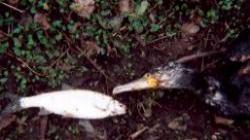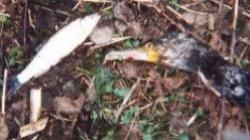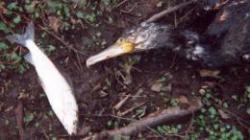The number of cormorants in the Uk has increased by 17 times in the last 25 years and the RSPB do not see that this is a problem
The problem: This website is not aimed at encouraging harm to cormorants. It is aimed at informing people of the environmental damage being caused by these birds.
Because cormorants will, quite quickly destroy the vast majority of fish stocks, the other birds and animals that rely on fish to eat are seriously in danger. For example, the kingfisher, this bird does not eat the same size of fish that the cormorant does, but after a cold spring (as we have just had) there are always far fewer minnows and then the kingfisher has to rely on the baby roach and dace etc, of which there are none of because the adult fish from which these baby fish come are vastly depleted. Birdwatchers are ignorant of these facts because they have so little interest in fish or aquatic life generally
These are some of the fish that are in the most danger of attack from cormorants.
The large dace in the first picture: this species never grow large enough to be safe. The small chub in the middle picture: many anglers pay to catch these and they do grow large, however they are slow growing and can be at a size that a cormorant could swallow for several years. The Grayling in this picture, this fish is at risk because it will only thrive in very clear clean water, this obviously makes the fish far easier for the cormorant to catch. This fish is a monitor fish, if you have a good population of Grayling in your river you can be sure that the water is pure and is not polluted.
I have had an E mail from a person who cant tell the difference between these three fish in the above photographs, all I can say about that is that either his/her computer is not giving him the correct definition of the pictures, or he/she is not as observant as I am. Of course it is the same dead cormorant, dead cormorants are not easy to find. Live cormorants, although very common are difficult to approach and would be even more difficult to shoot. Most shooters do not approach the water in such a way as to be able to shoot a cormorant and very few people posses guns in relation to the population in general. This is why the laws protecting cormorants are so utterly necessary. Obviously all fish start off small and some species live for many years, for this reason the cormorant predation problem on any water may not be noticed at first, it can take several years for their damage to show up in fish catches. I have spoken to many fishery owners who, not being anglers themselves, are not aware of the full extent of the problem or consequences. Do nothing and your fish stocks WILL be decimated. Fish stocks are a finite resource and cannot be continually stripped by these greedy birds. Cormorants can eat one and a half pounds of fish a day each!As a keen river angler it is heartbreaking to see this going on. Most anglers in the UK return their fish alive to the water and respect relevant closed seasons, therefore allowing the fish stocks to breed and it is possible to catch the same fish several times during its lifetime as a repeated sustainable resource. If you are a landowner who is presently receiving reliable sums of money from renting sections of river to fishing clubs or syndicates of anglers, check your waters early in the morning especially in the winter. Even if you only have a few cormorants, your fishery is still losing value every day. You cannot buy river fish to replace ones that are being eaten because every river in the country is suffering this, (except the ones with a very keen keeper who is also a good shot!)Fish stocks are very expensive. It would be very stupid to pay for new fish without first doing something about the cormorants. If you are a birdwatcher explain why birds should be protected and not fish.


